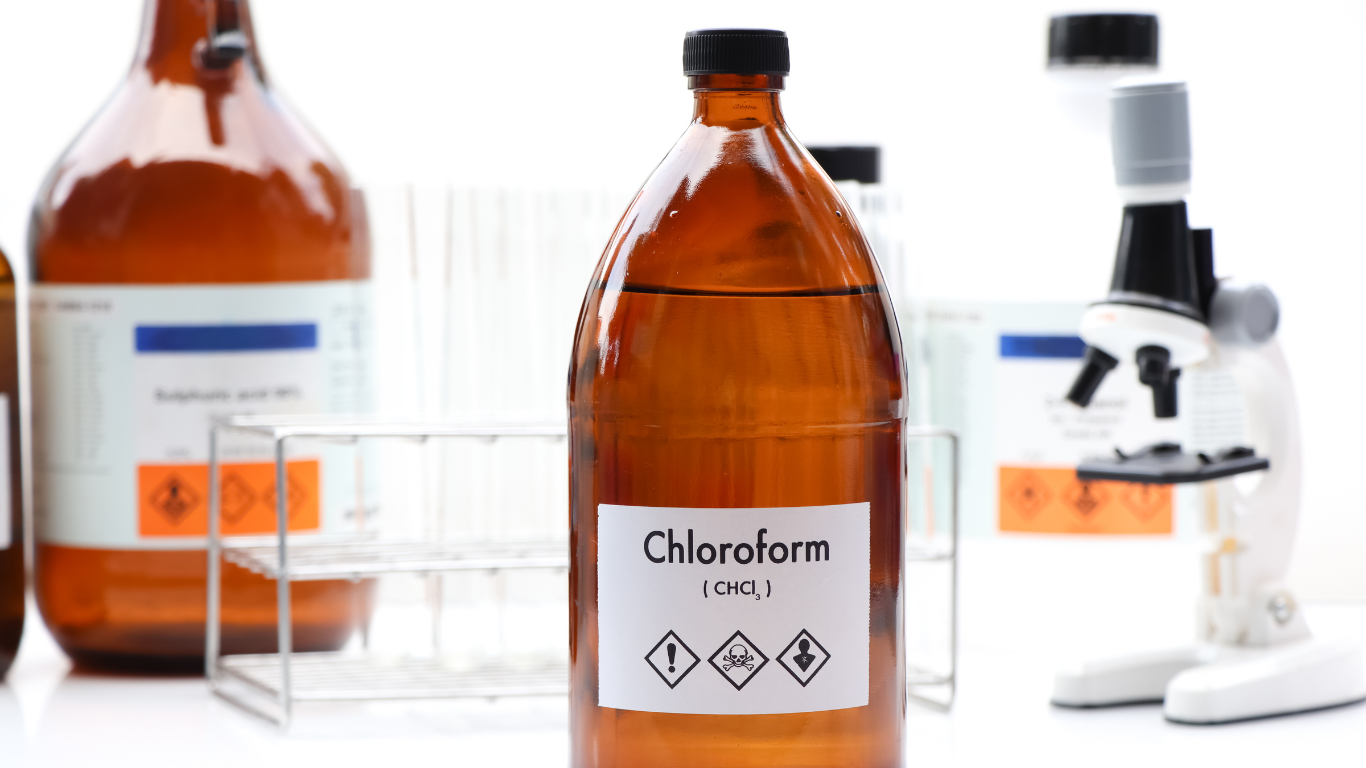Have you ever wondered about that unknown liquid that makes characters faint in movies?
That unknown liquid is chloroform, a transparent liquid with an unexpectedly sweet scent.
Do you know that the market for chloroform in India has expanded dramatically between FY2015 and FY2022? It was valued at approximately 310 thousand metric tons in FY2023 and is projected to reach a stable compound annual growth rate (CAGR) of 3.2% by FY2033.
That means this chemical is still significant in various industries and is used strategically.
Chloroform is a poisonous, colorless, and sweet-tasting liquid that is created when methane and chlorine mix. It was formerly used as an anesthetic in the medical sector and is now utilized as a solvent.
Therefore, this brief guide will look into chloroform’s world of features, suitable uses, and key precautions when dealing with such a powerful substance.
Applications of chloroform in the industrial sector
Effective in Degreasing:
Through production, oily grease develops on metal components, equipment, and working instruments in workshops or factories. As a highly effective paint remover, chloroform goes deep into these oils and greases, exposing the shiny, clean surface of the metal that is needed to ensure things are working properly and can be checked. Industrial cleaning methods have taken advantage of the degreasing property of chloroform.Paint removal:
Though its powerful solvent properties make chloroform capable of removing paint from wood and metal surfaces, consider its practicality in paint removal. There are safer options available that have fewer health and environmental impacts. Furthermore, these alternatives are surprisingly as efficient as chloroform; hence, it is not the best idea to use them for such projects.Procedures for Extraction:
In the medicament and food realms, chloroform operates as a selective extraction tool. It draws various intentions, such as alkaloids that have medicinal uses or perfumes, from natural resources. This specific extraction ensures that these constituents are separated and made available for drug and food manufacturing.Rubber Industry:
Some rubber products are manufactured using chloroform, although it may not be readily evident. The solvent can help dissolve substances, bring other ingredients together, or wash away contaminants. It is particularly important to make sure that the ultimate rubber product has certain features, such as tensile strength and elasticity.Adhesives and resins:
In making or using industrial adhesives and resins, specific solvents are sometimes needed. In this regard, chloroform dissolving certain elements becomes useful. This might help to modify the viscosity of glue, purge applying instruments, or even contribute to the resin’s actual formation process as well. Nevertheless, it may be restricted in use because of safety concerns, as opposed to less hazardous options.Factors to consider before buying chloroform
- Always Prioritize Safety: As regards powerful chemicals such as chloroform, it is imperative to select a distributor that takes security seriously. Search for firms that have demonstrated a record of safe handling and strict compliance with the law.
- Understanding your requirements: Think about what kind of chloroform is needed for that job. In most industrial cleaning jobs, technical grade works well but certain laboratory techniques may need reagent grade.
- Quantity needed and proper storage facility: Consider carefully how much chloroform is required for your project. Buying just what you need reduces any chance of storage concerns. You must have the right containers for storage, such as glass or some metals that are suitable for your products. These containers must be labeled properly and kept in areas with good ventilation away from direct sunlight.
- Authentic licensing and documentation: Certain areas may require permits or specific documentation for the purchase of chloroform. Trustworthy suppliers are aware of the local regulations and can assist you in this process. This way, you will comply with the law regarding a secure and proper purchase.
- Safety Data Sheet ( SDS): Request and carefully examine the SDS for the specific chloroform product before purchasing it. This will help you understand the hazards associated with the product, how to handle it safely, and how to dispose of it safely.


